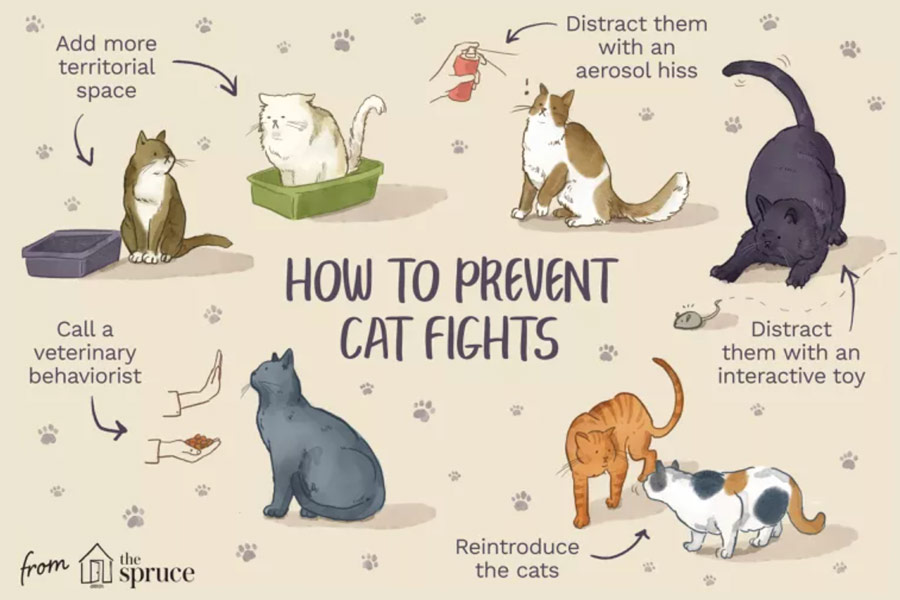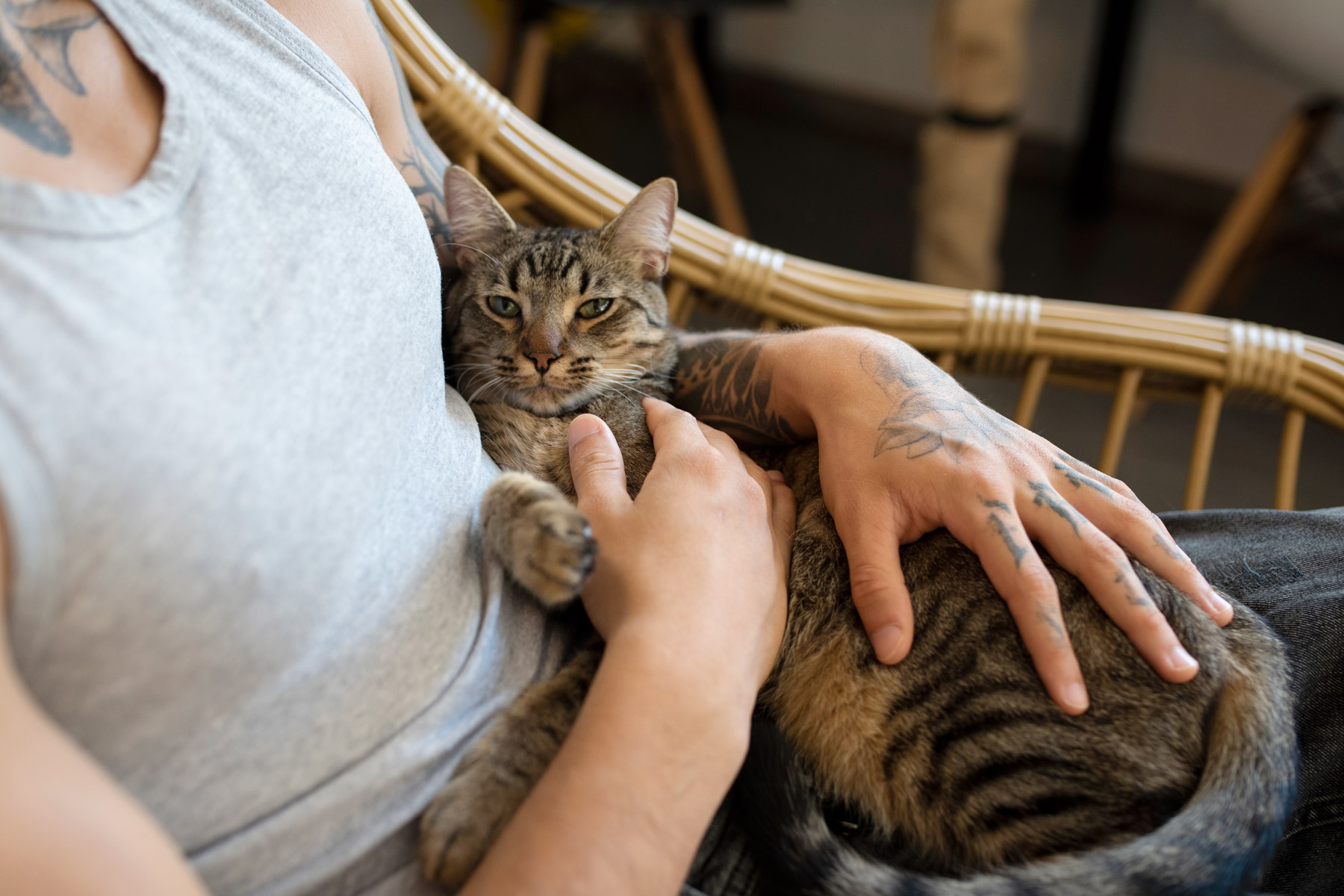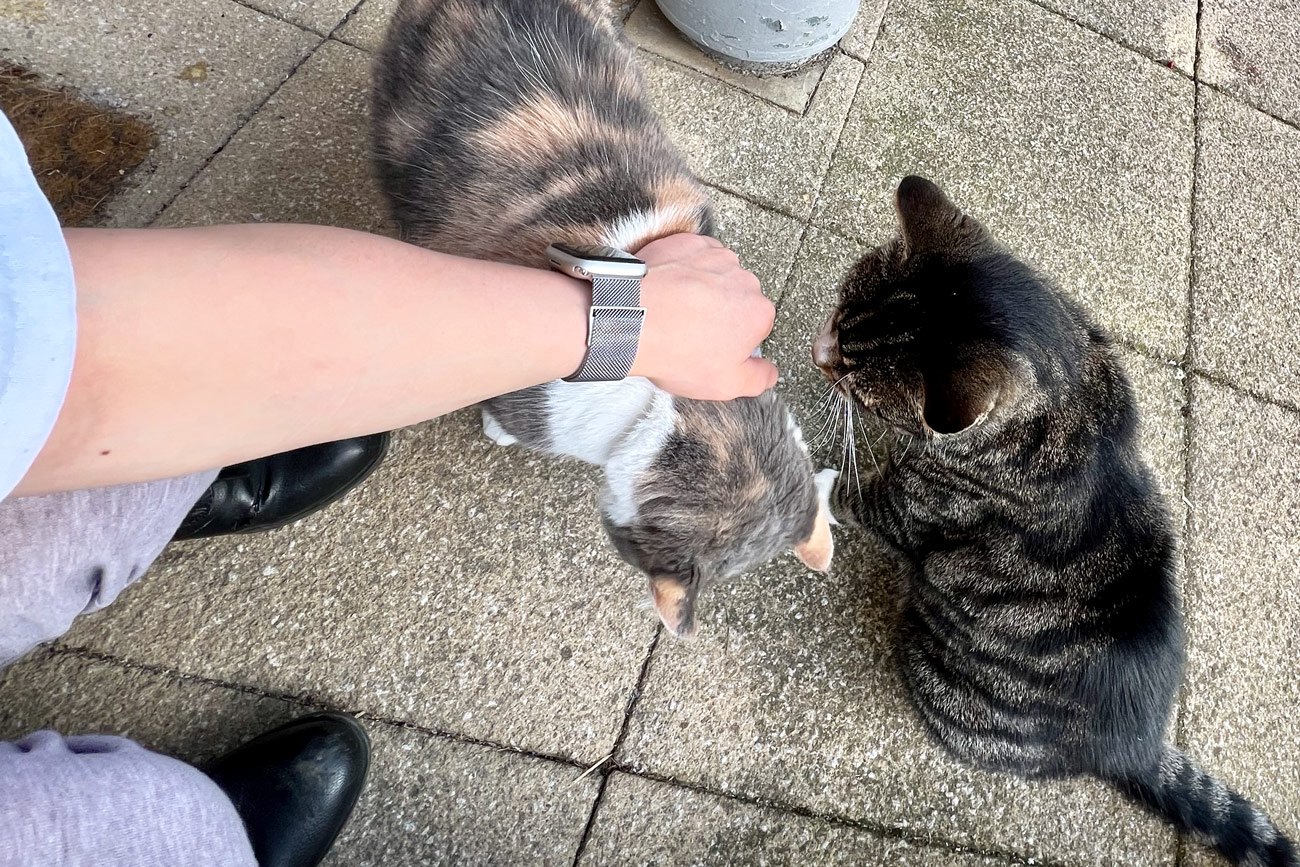Aggression is a common behavioural issue in cats that can lead to serious consequences, including injuries to humans, other animals, and even other cats. In fact, it is estimated that 27% of cats surrendered to shelters are given up due to unmanageable aggression. Understanding the reasons behind this behaviour and learning effective ways to manage it are crucial for cat owners.
Why Does Play Aggression Happen?
Play aggression typically arises during a cat’s early developmental stages. Cats are natural hunters, and play is an essential part of their instinctual drive to stalk, pounce, and “hunt.” In kittens, play serves as a learning experience for appropriate social behaviours:
- Socialization with Littermates: Kittens raised with littermates learn to play appropriately by interacting with one another. If a kitten bites or scratches too hard, the play session often ends, teaching the kitten to control the intensity of its actions.
- Cats Raised Alone: Kittens raised without littermates or early socialization may not develop these skills, leading to rough and inappropriate play as they grow. Without these experiences, they are more likely to develop play aggression.
How to Recognize Play Aggression
Cats displaying play aggression often exhibit the following behaviours:
- Hiding and ambushing passing targets, including human feet or hands.
- Stalking and pouncing with claws extended.
- Grabbing hands or feet with their teeth or paws.
Although this behavior might seem playful or harmless when the cat is young, it can become dangerous as the cat grows older.
Managing Play Aggression
Managing play aggression involves redirecting the cat’s energy and focus in a positive way. Here are some effective strategies:
- Redirect Attention with Toys:
- Use interactive toys like feather wands, laser pointers, or balls to engage your cat in healthy play. Avoid using your hands, feet, or fingers as toys to prevent confusion.
- Observe your cat’s preferences for toys and use those to channel their energy.
- Provide Environmental Enrichment:
- Enrich your cat’s environment with scratching posts, climbing trees, and window perches to keep them physically and mentally stimulated.
- Food puzzle toys can also provide mental stimulation and satisfy your cat’s predatory instincts.
- Limit Access to Hiding Spots:
- If your cat hides before ambushing, restrict access to those areas to reduce the likelihood of aggressive pouncing.
- Use Positive Distraction Techniques:
- Distract your cat using a can of compressed air or a gentle squirt of water. The goal is not to scare the cat but to refocus its attention.
- You can also startle your cat with a sound, like clapping your hands, to interrupt the behaviour.
- Walk Away and Ignore:
- If your cat engages in aggressive play, calmly leave the area and ignore the behaviour. This teaches the cat that inappropriate actions result in no attention or interaction.
Steps to Reduce Play Aggression
Consistency and proactive measures are key to reducing play aggression over time.
Set Boundaries. Consistently reinforce the message that biting or scratching during play is not acceptable. Never physically punish your cat, as this can lead to fear, defensive behaviour, and increased aggression.
Avoid Encouraging Rough Play. Do not use toys that involve your hands directly, such as gloves with dangling balls. These can confuse your cat into thinking it’s okay to attack your hands.
Engage in Daily Play Sessions. Dedicate at least 20-30 minutes a day to interactive play. Focus on directing your cat’s energy toward appropriate toys.
Redirect Aggression During Attacks. If your cat grabs your hand or foot, avoid pulling away, as this may trigger a predatory response. Instead, startle the cat or distract them with a toy to release their grip.
Consider a Companion Cat. If you’re away for long hours, consider adopting another cat. Proper introductions can help your cat develop socialization skills and provide an outlet for play.
Creating a Stimulating Environment
A stimulating environment can significantly reduce boredom and aggression. Here are some ideas:
- Provide a variety of toys, especially those that mimic prey movements.
- Install window perches so your cat can watch birds and outdoor activity.
- Rotate toys regularly to maintain your cat’s interest.
Play aggression in cats is a natural behaviour that can be managed effectively with patience, consistency, and proper techniques. By understanding your cat’s instincts and providing appropriate outlets for their energy, you can foster a healthier and happier relationship with your feline companion.
Play aggression in cats is a natural behaviour that can be managed effectively with patience, consistency, and proper techniques. By understanding your cat’s instincts and providing appropriate outlets for their energy, you can foster a healthier and happier relationship with your feline companion.




